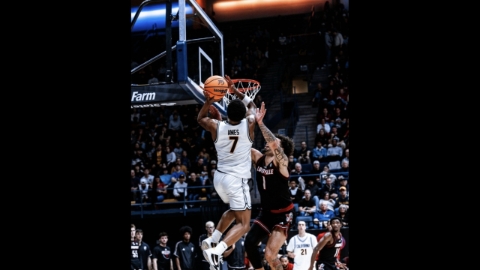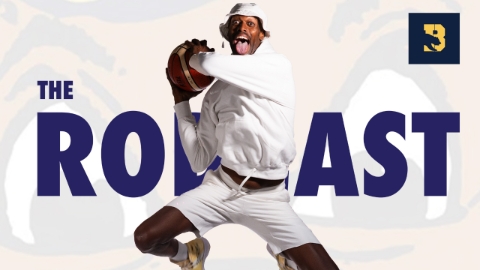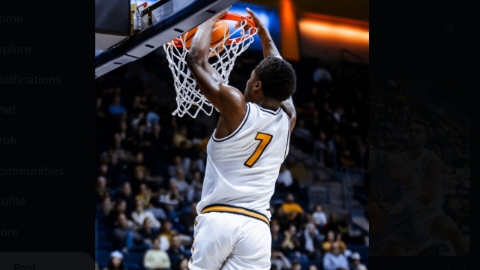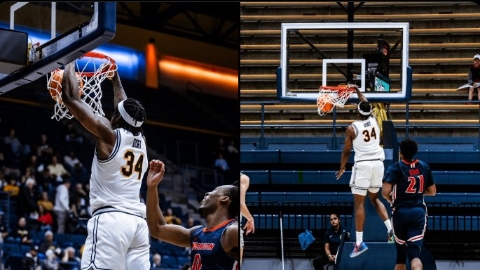Yes, U of A graduates get jobs. Two of them were my sister and my brother-in-law. They met there. It's fine that he went to Arizona. But you're implication is that there is something magical that the Monty could have said to Gordon to convince him to go to Cal instead. I don't think so. I also would have rather had the Monty at Stanford, but he has also acknowledged that after a certain point, he didn't have to do much recruiting to get players there, they recruited themselves. He thought it would be the same at Cal, but it wasn't, partly I think because Cal doesn't coddle students in general the same way Stanford does. You want Monty to have been different, and Cal to be different. I just don't expect that to happen, so my response, as I told you elsewhere, is to lower my expectations, and my level of program support. I hope that Fox or some future coach will catch lightning in a bottle, and we'll somehow get on a different path. But that's probably what is is, lightning in a bottleOaktownBear said:You may not realize this but a lot of people go to University of Arizona and actually get jobs. What do you think makes a bigger impact on Gordon's life, economically and otherwise, his basketball training or his academic training? Gordon had plenty of opportunity to engage in intellectual curiosity at Arizona and his post basketball life is probably not different based on being at UA instead of Cal vs. what he did with his time in college. I have no idea whether Gordon is inclined toward studies or not, but choosing Arizona as a student who plays basketball and has a significant opportunity at a long career whether in the NBA or overseas is does not mean they aren't concerned with academics. And yes, basically any basketball player who has a chance at the NBA cares more about what a school can provide them in terms of basketball rather than academics, but it doesn't mean they don't care about academics.Jeff82 said:Sorry, don't buy it. He did go to an academic high school, but if he was really that concerned about his post-hoop prospects, he would not have gone to Arizona. To compare, Brown's logic was that he was going high in the draft, no matter where he went to school, so he might as well go somewhere where he would enjoy it. Gordon also could have done that. Also, by your implied logic, we should never have had Monty, because he didn't like recruiting. Well, it's pure speculation whether a coach other than Monty, who was a superior recruiter would have been more successful over his tenure. You guys are both making a binary argument--only talent matters versus only coaching matters. The reality is, we've never had both at the same time. All the coaches were either recruiters who couldn't coach (Padgett, Braun, arguably Martin, also Campanelli, who recruited Lamond Murray and Jason Kidd, then couldn't figure out how to get along with them), coaches who couldn't recruit (Monty), or couldn't do either (Edwards, Kuchen, Jones). I don't which category Bozeman goes in, because he got us on probation and wrecked his career cheating to a player (Jelani Gardner) who had a mediocre college career.socaltownie said:Gordon has a brother who works at Google and has CONSISTENTLY spoken about his desire to get into tech/VC when his playing days are over. I only use him as an example. And I would note - we beat Zona for Rabb once we had a coach (Martin) that put in what it takes (and yes, it is humiliating) to recruit 18 year olds that are placed on a pedestal (look at Haase writing a letter a day for a year)Jeff82 said:
The brother I never knew.
And my "solution" is even a bit tighter - it is that Cal should be positioned - and cal coaches evaluated - on their ability to recruit the one and dones (or 2 and dones) from NorCal that can deal with the academics at Cal. Losing them, consistently, is grounds for a talk with the AD unless the W-Ls are showing otherwise.
Again, I return to 2 recent players:
There is no way Aaron Gordon should have gone to Zona and his decision to do so should have caused serious post-mortum discussions at the university
There is also no way that Cal should not have found a way to bury the hatchet with the Payton family. One wonder if we had whether GPJ would have sniffed Cal after his stint at CC.
The fact that we do NOT consistently retain bay area and sacto talent seems like the first step toward rebuilding the program. And yes - that means being an attractive location to kids that can make money at the show and may not be at the institution for more than a season or 2.
SCT, you may be right here, but you also can't just say that player X "should have gone to Cal," without evaluating the circumstances. I'll refer back to my comment in the other thread regarding Jaylen Brown, who clearly came to Cal for his year because he wanted a year of intellectual experience, and wasn't going to spend his free time in the gym developing his jumper. By the same token, the fact that Gordon went to U of A strongly suggests that he was only going to college to play basketball, not to go to class at all. And as much as I admire Jason Kidd as a player, my understanding is that he also dumped on academics in year 2, when he knew he was leaving regardless. Brown has been a great ambassador for the program, and I hope we get more kids like him, who are talented and want a college experience. But as I said in the other thread, you have to take kids for the skill levels and desire they bring with them, and not criticize that they're not gym rats.
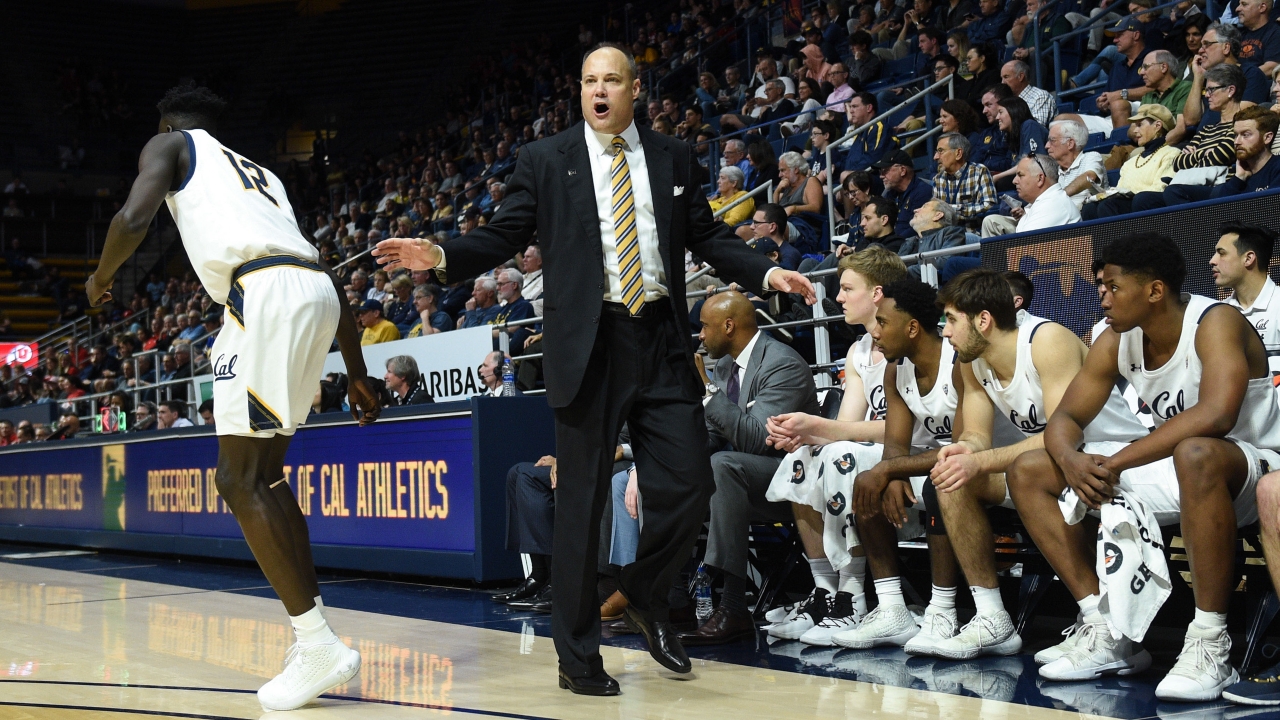
Let me start by saying, I was never a critic — publicly or privately — about Cal Athletic Director Jim Knowlton’s hiring of Mark Fox. The main reason? It was a luke-warm hire. And that’s not meant to be a critique of Knowlton or Fox. There just isn’t much else to feel for a coach that went to the NCAA Tournament twice in nine seasons at the University of Georgia and never won a game in said tournament. Fox had also been out of the job for a year when Cal came calling.
And for that lack of confidence or excitement, I officially apologize to Coach Fox.
Now let’s not get ahead of ourselves. A 14-18 season is nothing to be excited about. But let’s also not forget where Cal had been — a combined 16-47 over the previous two seasons including 5-31 in the Pac-12. Even the most optimistic fans probably didn’t predict much of an improvement considering the hodge-podge roster Fox slung together after many transfers. But Fox has done exactly what you hope a veteran coach would do immediately to a program that hit rock-bottom — he raised the floor in his own way.
I didn’t think Cal would win much more than eight to 10 games this year and definitely not seven wins in a Pac-12 conference filled with more athletic and talented rosters than Cal’s. And for that lack of confidence in Fox, I again apologize. Despite some heinous losses in conference play, Fox had his guys ready to go the next game. Even after getting swept by a combined 52 points in the state of Oregon, Cal came out in the opening round of the Pac-12 Tournament and planted an uppercut on Stanford’s dwindling NCAA Tournament hopes.
Yes, there are still massive improvements to make. Cal fans expect to be in the NCAA Tournament year-after-year. Yes, some of the questions surrounding Fox (like strong recruiting and offense) haven’t been answered.
But after Year One of the Fox coaching regime, it’s clear his coaching philosophies have been instilled on the young roster. Let’s take a look at what the data tells us.
2019 Offense versus 2020 Offense
| Offensive Category | 2019 | 2020 | Difference |
|---|---|---|---|
| Adj. Efficiency | 103.5 (192) | 101.5 (195) | -2.0 |
| Adj. Tempo | 66.6 (234) | 65.2 (315) | -1.4 |
| Avg. Poss. Length | 18.6 (298) | 19.4 (334) | 0.8 |
| Effective FG% | 48.6% (272) | 46.9% (295) | -1.7% |
| Turnover % | 16.4% (48) | 19.2% (271) | 2.80% |
| Off. Rebound % | 23.3% (317) | 25.1% (271) | 1.80% |
| FTA/FGA | 34.8 (126) | 36.0 (83) | 1.2 |
| 3P% | 35.0% (140) | 33.5% (161) | -1.50% |
| 2P% | 46.5% (301) | 45.5% (320) | -1.00% |
| FT% | 72.3% (120) | 73.8% (85) | 1.50% |
| Block % | 8.7% (127) | 9.6% (251) | 0.90% |
| Steal % | 7.2% (20) | 7.4% (24) | 0.20% |
| Non-Stl TO% | 9.2% (132) | 11.9% (322) | 2.70% |
| 3PA/FGA | 34.1 (294) | 28.4 (339) | -5.7 |
| A/FGM | 45.7 (314) | 41.5 (345) | -4.2 |
| 3-Pointers (Pt. Dist.) | 29.3% (250) | 23.7% (318) | -5.60% |
| 2-Pointers (Pt. Dist.) | 50.2% (145) | 54.2% (71) | 4.00% |
| Free-Throws (Pt. Dist.) | 20.6% (79) | 22.1% (37) | 1.50% |
First, the bad. Cal’s offense actually digressed slightly this year compared to last year, according to KenPom’s metrics. The adjusted offensive efficiency slipped two full points from 103.5 to 101.5, meaning in 100 possessions, Cal would score 101.5 points. For the third straight year, Cal had the least efficient offense in the Pac-12.
Cal slowed the pace — but not by much at just a little over a possession per game. It shot almost two percentage points worse in effective field goals and turned it over almost three percentage points more per game. The Bears did get to the free-throw line at a slightly higher rate and made a higher percentage of shots once it got there.
But the main issue was one that most fans could see — Cal’s only consistent scoring threat was sophomore wing Matt Bradley. Other players had their moments. Andre Kelly had a few solid games and overall progressed throughout the year. Paris Austin threw together a strong second-half to his senior campaign. Kareem South was good early in the season. And Grant Anticevich had some solid games.
None of them were consistent enough, however, for opponents to take focus away from Bradley. To take a step forward next season, Fox needs to either find an impact scorer in the transfer market or a couple of players on the current roster are going to have to take some steps forward. It could happen. Anticevich isn’t the quickest or most athletic, but he can knock down shots. Kelly could continue to improve. A healthy Kuany Kuany could also help.
The other glaring hole that should be addressed is who backs up Joel Brown at the lead guard position. Fox offered junior college transfer Malik Zachery last week. That could be an option. But it’s something to monitor once recruiting picks back up (assuming it does) after coronavirus restrictions are lifted.
UGA Offensive Averages versus 2020 Cal Offensive Averages
| Year | AdjT | AdjO | eFG% | TO% | OR% | FTR | 2P% | 3P% | FT% | 3PA% | A% | APL |
|---|---|---|---|---|---|---|---|---|---|---|---|---|
| 2020 Cal Avg. | 65.2 | 101.5 | 46.90% | 19.20% | 25.10% | 36.0 | 45.50% | 33.50% | 73.80% | 28.40% | 41.50% | 19.4 |
| UGA Average | 64.0 | 107.5 | 48.09% | 19.90% | 32.94% | 41.8 | 46.71% | 34.13% | 70.40% | 30.34% | 53.32% | 18.9 |
The good news is, Cal's offense should improve as a system. In his nine seasons at Georgia, Fox teams averaged an adjusted offensive efficiency of 107.5. Looking at the two charts above, you can see the offense is slowly moving towards the Fox system of getting to the foul line and crashing the offensive glass. Both of those categories ticked up compared to 2019 but both have a ways to go to meet the averages Fox teams maintained at Georgia.
When Fox teams were at their best at Georgia, they were getting to the foul line at very high rates (47.7 in 2015 and 54.1 in 2014).
2019 Cal Defense versus 2020 Cal Defense
| Defensive Category | 2019 | 2020 | Difference |
|---|---|---|---|
| Adj. Efficiency | 110.3 (286) | 100.4 (130) | -9.9 |
| Adj. Tempo | 66.6 (234) | 65.2 (315) | -1.4 |
| Avg. Poss. Length | 16.8 (44) | 17.5 (184) | 0.07 |
| Effective FG% | 56.9% (348) | 49.9% (200) | -7.00% |
| Turnover % | 20.5% (62) | 17.3% (275) | -3.20% |
| Off. Rebound % | 31.4% (289) | 26.3% (102) | -5.10% |
| FTA/FGA | 36.1 (260) | 37.0 (278) | 0.9 |
| 3P% | 38.1% (331) | 36.3% (310) | -1.80% |
| 2P% | 56.7% (344) | 47.0% (81) | -9.70% |
| FT% | 71.8% (246) | 73.6% (309) | 1.80% |
| Block % | 10.0% (141) | 7.4% (242) | -2.60% |
| Steal % | 10.7% (42) | 6.1% (349) | -4.60% |
| Non-Stl TO% | 9.8% (149) | 11.2% (56) | 1.40% |
| 3PA/FGA | 41.8 (281) | 38.0 (190) | -3.8 |
| A/FGM | 55.3 (271) | 51.7 (192) | -3.6 |
| 3-Pointers (Pt. Dist.) | 34.2% (98) | 32.6% (109) | -1.60% |
| 2-Pointers (Pt. Dist.) | 47.3% (262) | 46.0% (309) | -1.30% |
| Free-Throws (Pt. Dist.) | 18.6% (175) | 21.4% (67) | 2.80% |
Here’s where the name of this article really applies. Cal’s offense was bad last year. And I didn’t expect it to improve much. But it absolutely did. And Fox gets credit for that. It wouldn’t have happened without player buy-in. But player buy-in doesn’t happen without some coaching. In one season, Cal’s adjusted defensive efficiency went from 110.3 to 100.4. Opponents were averaging 10 points less per 100 possessions.
Last season, Cal was good at forcing turnovers and not good at basically everything else. This season Cal wasn’t forcing turnovers at the same rate, but they were creating tougher shots for opponents — especially inside the three-point arc, where teams shot almost 10% worse than they did against the Bears last season.
The perimeter was a big issue early but stabilized. But the pack-line defense Fox instilled worked. Cal’s best games were ones when it bogged down other teams and made the game a rock fight. That comes from solid interior defense.
UGA Average Defenses versus 2020 Cal Average Defense
| Year | AdjD | eFG% | TO% | OR% | FTR | 2P% | 3P% | Blk% | 3PA% | A% | APL | 2FP% |
|---|---|---|---|---|---|---|---|---|---|---|---|---|
| 2020 Cal Avg. | 100.4 | 49.90% | 17.30% | 26.30% | 37.0 | 47.00% | 36.30% | 7.40% | 38.00% | 51.70% | 17.5 | 22.90% |
| UGA Average | 97.3 | 46.07% | 16.99% | 29.54% | 36.3 | 44.39% | 32.70% | 12.33% | 35.63% | 46.42% | 17.8 | 7.10% |
There are also some improvements to be made on defense to hit Fox's Georgia averages. In nine seasons at Georgia, the Bulldogs averages an adjusted defensive efficiency rate of 97.3 — about three points better than this year’s Bears squad. Fox’s last team at Georgia was probably his best defensively. That year the Bulldogs were very bad at forcing teams into turnovers but incredibly good at making them miss. That’s something that will likely continue to be a trend in Fox-coached teams.
Cal’s improvements on defense were what helped this team over-achieve. It was a very flawed offensive team. But when it played solid defense, the Bears could keep themselves close. I didn’t expect Fox to get that sort of buy-in this quickly. And I didn’t expect 14 wins. I didn’t expect Cal to finish ahead of Mike Hopkins and the Washington Huskies or Kyle Smith and the Washington State Cougars — both of which are coaches I think many Cal fans (myself included) would’ve picked over Fox. And for all of that, once again, my apologies, Mark Fox.
